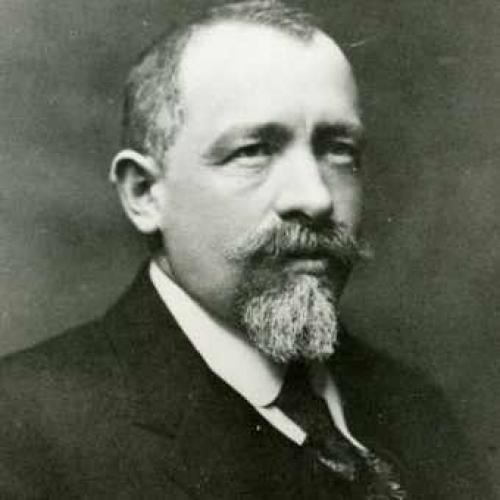Name Meir Balaban | ||
 | ||
Died December 26, 1942, Warsaw Ghetto | ||
Meir Balaban or Majer Samuel Bałaban (3 March [O.S. 20 February] 1877, 18 Adar [5]637, Lviv – 26 December 1942, Tevet [5]702, Warsaw Ghetto) was one of the most outstanding historians of Polish and Galician Jews, and the founder of Polish Jewish historiography.
Contents
- Early years
- Biography and initial studies on Jewish history
- Works on the history of Polish Jews
- Memory
- References

Early years

Balaban was born in 1877 in the city of Lviv (then known as Lemberg in Austria-Hungary's centre of Polish Galicia). He received a traditional education at home and traditional Jewish schooling (Hebrew language and Bible study) in a cheder.
Biography and initial studies on Jewish history
He studied law, philosophy and history at Lviv University. He accidentally encountered materials on the history of Jews in Kraków, and on the request of the Kraków Jewish kahal, he wrote the first volume of "The History of Jews in Cracow and Kazimiria 1304-1655" (Kraków, 1912). It gave him some reputation in Lviv University. Balaban then won a high ministry scholarship, and departed for a long scientific trip to Poznań, Berlin and Gdańsk. He stayed for several months in Kraków collecting materials for the second volume of the history of Kraków Jews. Simultaneously he started the publication "The history of Jewish system in Poland" in "Evreiskaia Starina" ("Jewish Old Times", as translated from Russian) magazine. He taught in different schools in the Lviv region and Lviv combining studying with teaching and research. He spent the first year of World War I in Vienna teaching at the gymnasium for Galician refugees. The next three years, he spent in Lublin as a referent (reporter) on Jewish matters by the Austrian General Government. At these posts, he organised many Jewish kahals and gymnasiums. Together with Dr. Ozjasz Thon and Dr. Moses Schorr, Balaban was one of the founders of the Institute of Jewish Sciences in Warsaw. Here Balaban taught Jewish history and led the historical seminar which issued many works on the history of Jews in Poland and in particular in the Polish kingdom. Balaban had also published "The history of Jews in Galicia" in 1916. Since 1903 Balaban led the review of the bibliography of the history of Jews in Poland in the Polish historical magazine "Kwartalnik historyczny" ("History Quarterly"). During nine years Balaban had been administering the Tachkemoni Rabbinical Seminary (1920–1929) and for 1920-1921 he had been also the rector of the gymnasium "Askola". The fate of Balaban was also tragic like Schorr's one. He died in the Warsaw ghetto on 26 December 1942.
Works on the history of Polish Jews
He was the first outstanding historian of Polish Jewry and he is fairly considered as the founder of the historiography of Polish Jews. Among his works the most important ones are:
He wrote also a detailed article about the Vaad of four lands for the 11th volume of "History of Jewish people". He published hundreds of articles which are devoted to the researches of rabbis', scholars', community leaders' activities as well as the history of bloody pogroms, about the Karaims in Poland and other topics. All they were published mostly in German, Polish or in Yiddish. Balaban's researches written in Hebrew on the history of movement's of Shabatai Zwi and Jakob Frank are especially important to note. They are resumed in his book "Le toldot ha-tnua ha-frankit" (The history of the Frank movement, 2 vols., 1934–1935). It was published in Tel Aviv. Balaban had written also "The history of the progressive synagogue in Lvov" (in polish original "Historia postępowej synagogi we Lwowie") as well as "The Bibliography of the history of Jews in Poland during 1900-1930" which encompasses more than 10.000 entries.
Since 1906 he published many scientific articles in the newspaper "Kurjer Lwowski". The first more essential essays appeared in the almanac "Rocznik Żydowske" in 1902-1906:
Some of these articles became the preparation for the mentioned already Balaban's work entitled "Żydzi Lwowscy na przelomie XVI i XVII wieku" (Jews of Lvov in the break of the 16th and 17th centuries, 1906, 577 pages of the text and 188 pages of the materials). Balaban was awarded the first premium of Ipolit Wawelberg for this work. The work consists of 3 parts. In the first part Balaban depicts the live history of the external events of the community, discussing in details the clamorous deal of Lviv Jews with Jesuits and the eager leaders of the community of the Nachman family; the second part is devoted to the detailed contemplation over the community self-administration and the Rabbinate and the last part consists of a few essays about the trade, crafts, family life, and like that. Balaban used rich archival data of the Archive of Bernardines in Lviv as well as of the Lviv City Archive and the Archive of Jewish Community in Lviv.
Memory
One of the streets in the downtown of Lviv, Ukraine is named after him (Majer Balaban Street, Lviv). There are also streets named after him in Israel, in Holon for example.
